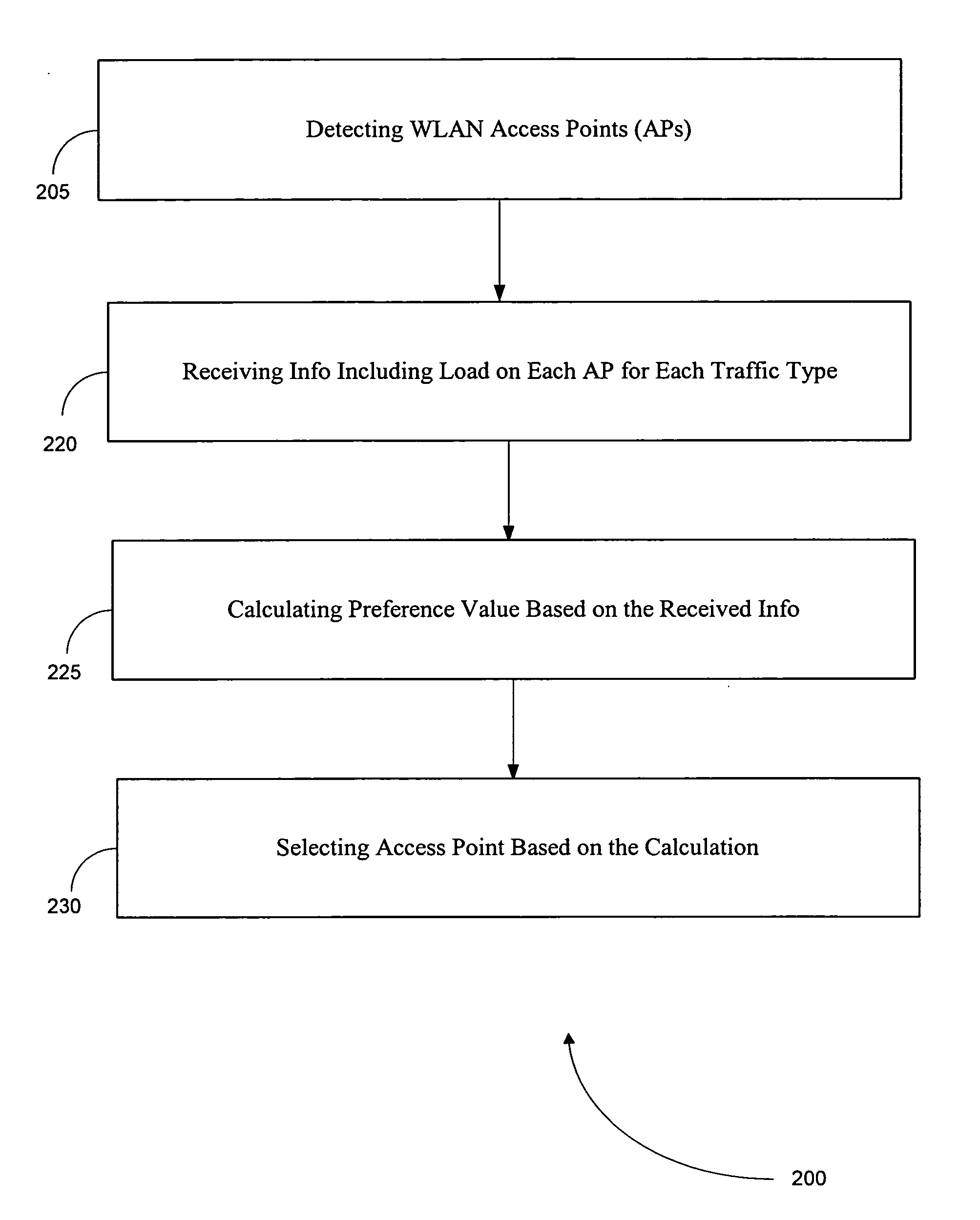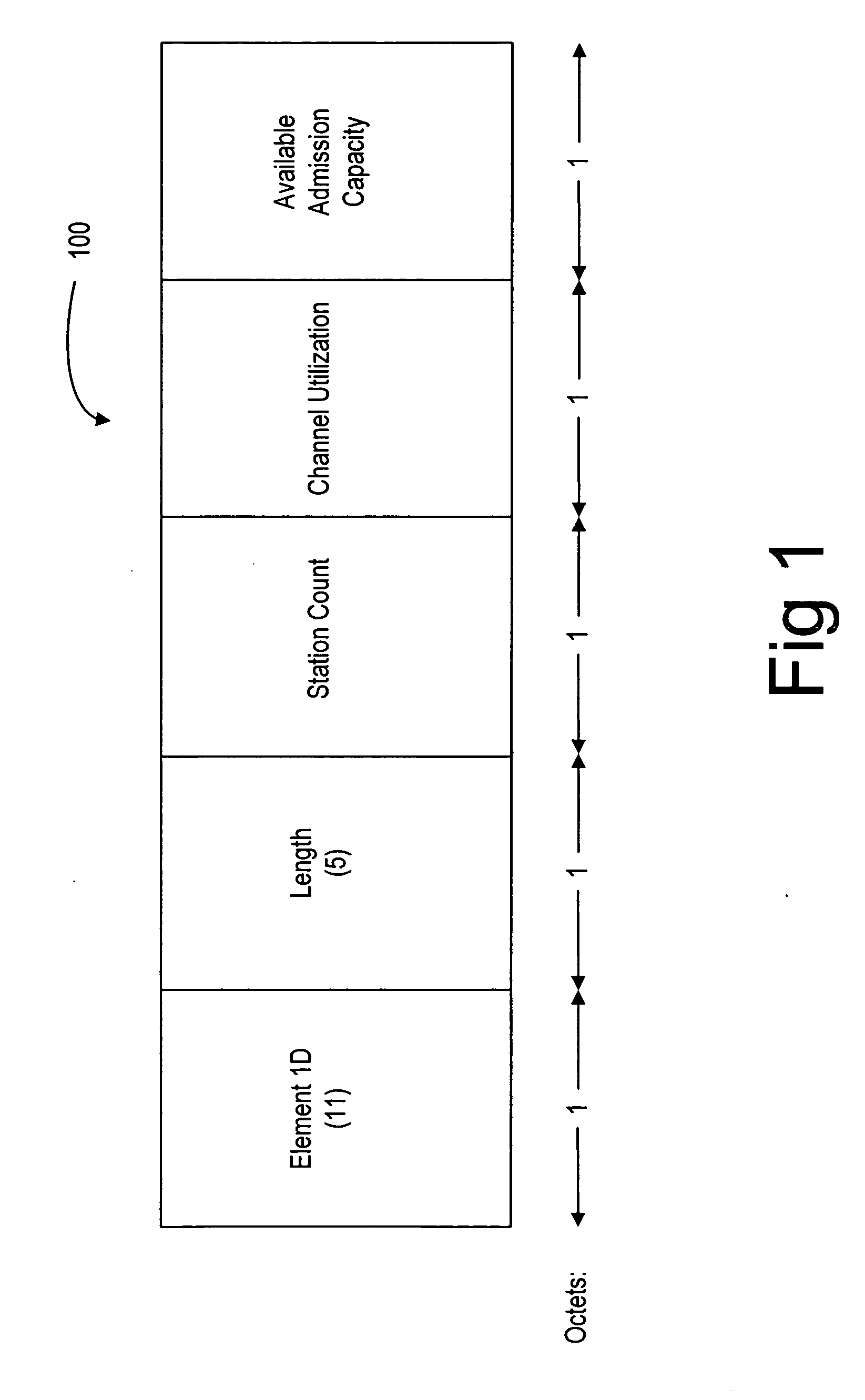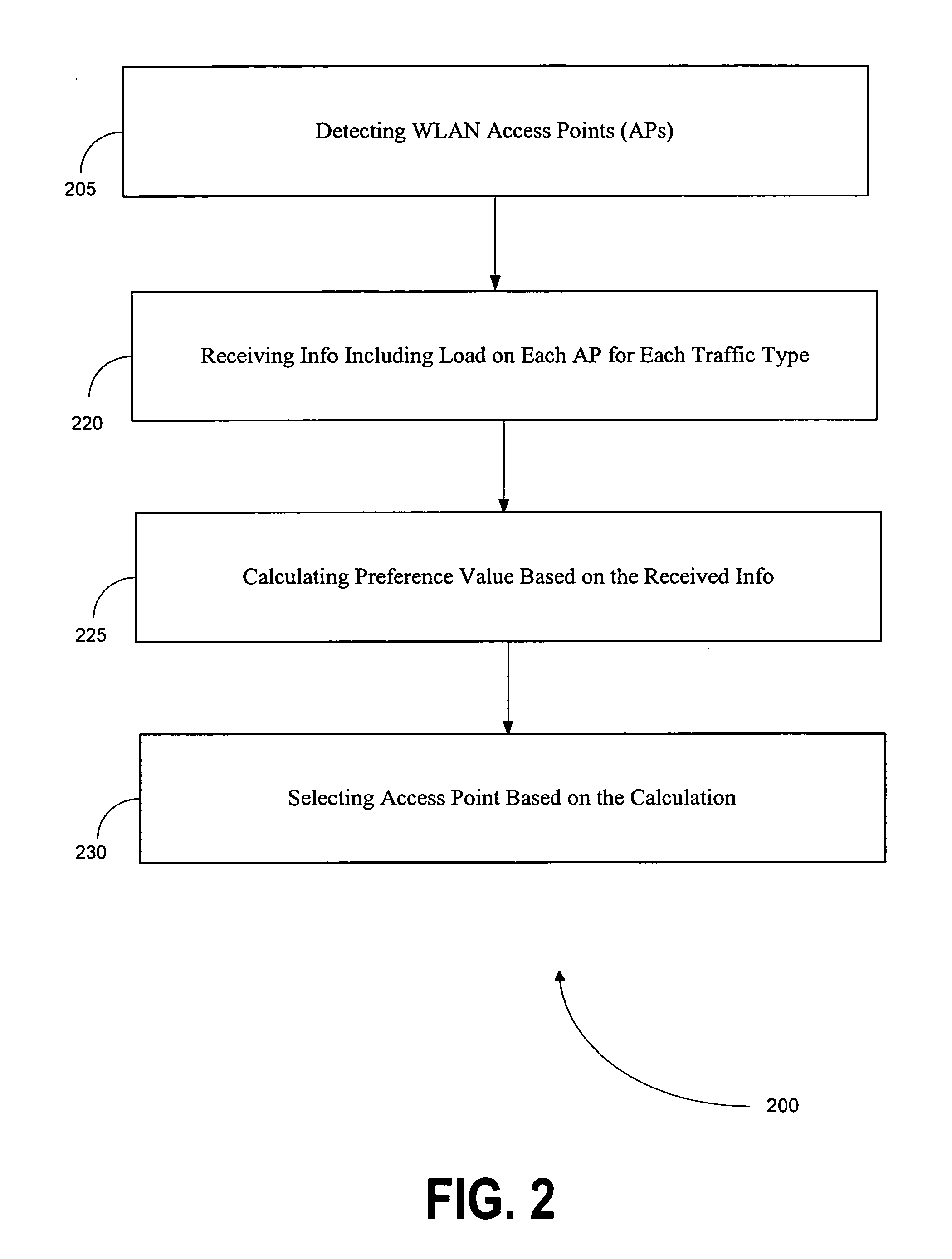Method, mobile station, and software product for access point selection
a technology of access point selection and mobile station, applied in the field of can solve the problems of inefficient use of radio resources, and inefficient use of wireless bandwidth, and achieve the effect of enhancing wlan access point selection and efficient use of wireless bandwidth
- Summary
- Abstract
- Description
- Claims
- Application Information
AI Technical Summary
Benefits of technology
Problems solved by technology
Method used
Image
Examples
Embodiment Construction
[0019] An algorithm according to the present invention can be implemented either in an AP or in an STA. However, according to the current 802.11 standard, STA is responsible for making a decision about which AP that it associates with. Before connecting to an AP, the STA has to carry out the following steps: Scan, Authentication, and Association; after the scanning process ends, the STA decides which AP it will associate with. Therefore the present embodiment focuses upon the algorithm implemented in STAs.
[0020] In order to select an AP, the following information is considered: Channel Load, Physical transmission rate, and Multimedia Traffic Load. Each of these three pieces of information will now be discussed.
[0021] Regarding the Channel Load, this is an important factor. It is very useful for finding out whether or not a WLAN network is congested.
[0022] Regarding physical transmission rate, the 802.11 standard supports rate diversity (for example, in 802.11b, 1 Mbps, 2 Mbps, 5....
PUM
 Login to View More
Login to View More Abstract
Description
Claims
Application Information
 Login to View More
Login to View More - R&D
- Intellectual Property
- Life Sciences
- Materials
- Tech Scout
- Unparalleled Data Quality
- Higher Quality Content
- 60% Fewer Hallucinations
Browse by: Latest US Patents, China's latest patents, Technical Efficacy Thesaurus, Application Domain, Technology Topic, Popular Technical Reports.
© 2025 PatSnap. All rights reserved.Legal|Privacy policy|Modern Slavery Act Transparency Statement|Sitemap|About US| Contact US: help@patsnap.com



